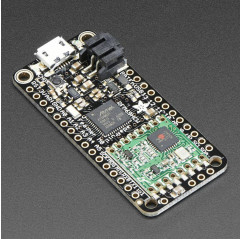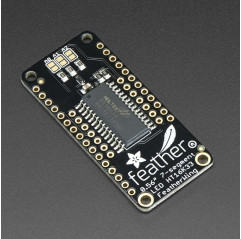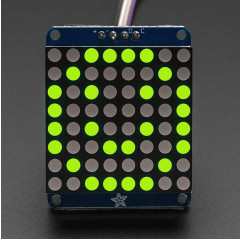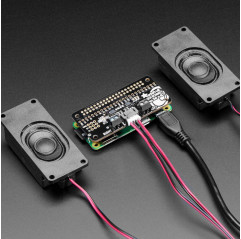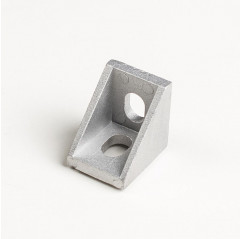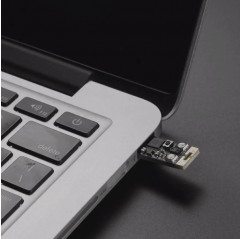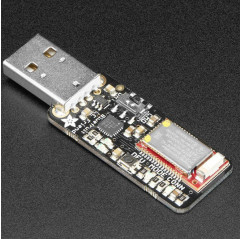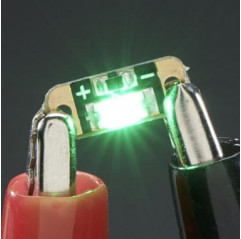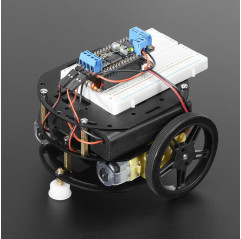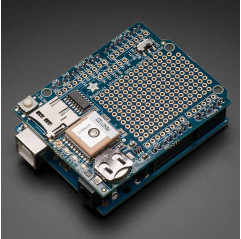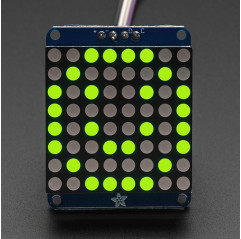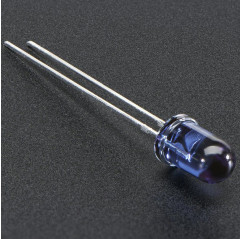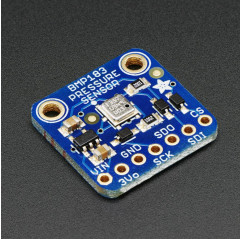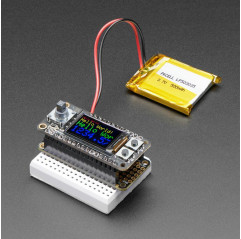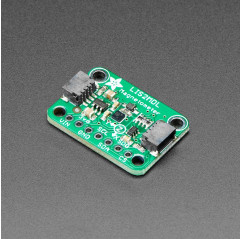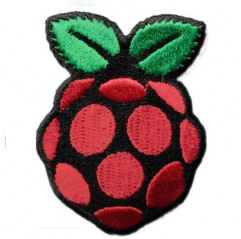This is the Adafruit Feather M0 RFM69 Packet Radio (433 MHz) - Adafruits take on a microcontroller with a RFM69 HCW packet radio transceiver plus built in USB and battery charging. Its an Adafruit Feather M0 with a 433MHz radio module cooked in!
We have other boards in the Feather family, check'em out here.
At the Feather M0's heart is an ATSAMD21G18 ARM Cortex M0 processor, clocked at 48 MHz and at 3.3V logic, the same one used in the new Arduino Zero. This chip has a whopping 256K of FLASH (8x more than the Atmega328 or 32u4) and 32K of RAM (16x as much)! This chip comes with built in USB so it has USB-to-Serial program & debug capability built in with no need for an FTDI-like chip.
To make it easy to use for portable projects, Adafruit added a connector for any of their 3.7V Lithium polymer batteries and built in battery charging. You don't need a battery, it will run just fine straight from the micro USB connector. But, if you do have a battery, you can take it on the go, then plug in the USB to recharge. The Feather will automatically switch over to USB power when its available. They also tied the battery thru a divider to an analog pin, so you can measure and monitor the battery voltage to detect when you need a recharge.
Here's some handy specs! Like all Feather M0's you get:
Measures 2.0" x 0.9" x 0.3" (51mm x 23mm x 8mm) without headers soldered in
Light as a (large?) feather - 5.8 grams
ATSAMD21G18 @ 48MHz with 3.3V logic/power
No EEPROM
3.3V regulator with 500mA peak current output
USB native support, comes with USB bootloader and serial port debugging
You also get tons of pins - 20 GPIO pins
Hardware Serial, hardware I2C, hardware SPI support
8 x PWM pins
10 x analog inputs
1 x analog output
Built in 100mA lipoly charger with charging status indicator LED
Pin #13 red LED for general purpose blinking
Power/enable pin
4 mounting holes
Reset button
The Feather M0 Radio uses the extra space left over to add an RFM69HCW 433MHz radio module. These radios are not good for transmitting audio or video, but they do work quite well for small data packet transmission when you need more range than 2.4 GHz (BT, BLE, WiFi, ZigBee)
SX1231 based module with SPI interface
Packet radio with ready-to-go Arduino libraries
Uses the license-free ISM band ("European ISM" @ 868MHz or "American ISM" @ 915MHz)
+13 to +20 dBm up to 100 mW Power Output Capability (power output selectable in software)
50mA (+13 dBm) to 150mA (+20dBm) current draw for transmissions
Range of approx. 350 meters, depending on obstructions, frequency, antenna and power output
Create multipoint networks with individual node addresses
Encrypted packet engine with AES-128
Simple wire antenna or spot for uFL connector
Comes fully assembled and tested, with a USB bootloader that lets you quickly use it with the Arduino IDE. They also toss in some headers so you can solder it in and plug into a solderless breadboard. You will need to cut and solder on a small piece of wire (any solid or stranded core is fine) in order to create your antenna. Lipoly battery and USB cable not included but we do have lots of options in the shop if you'd like!
TECHNICAL DETAILS
51mm x 23mm x 8mm / 2.0" x 0.9" x 0.28"
Weight: 5.6g
FCC Test Report
RoHS Test Report
RoHS Test Report
REACH Test Report
RFM69HCW Datasheet
SX1231 Transceiver Datasheet






